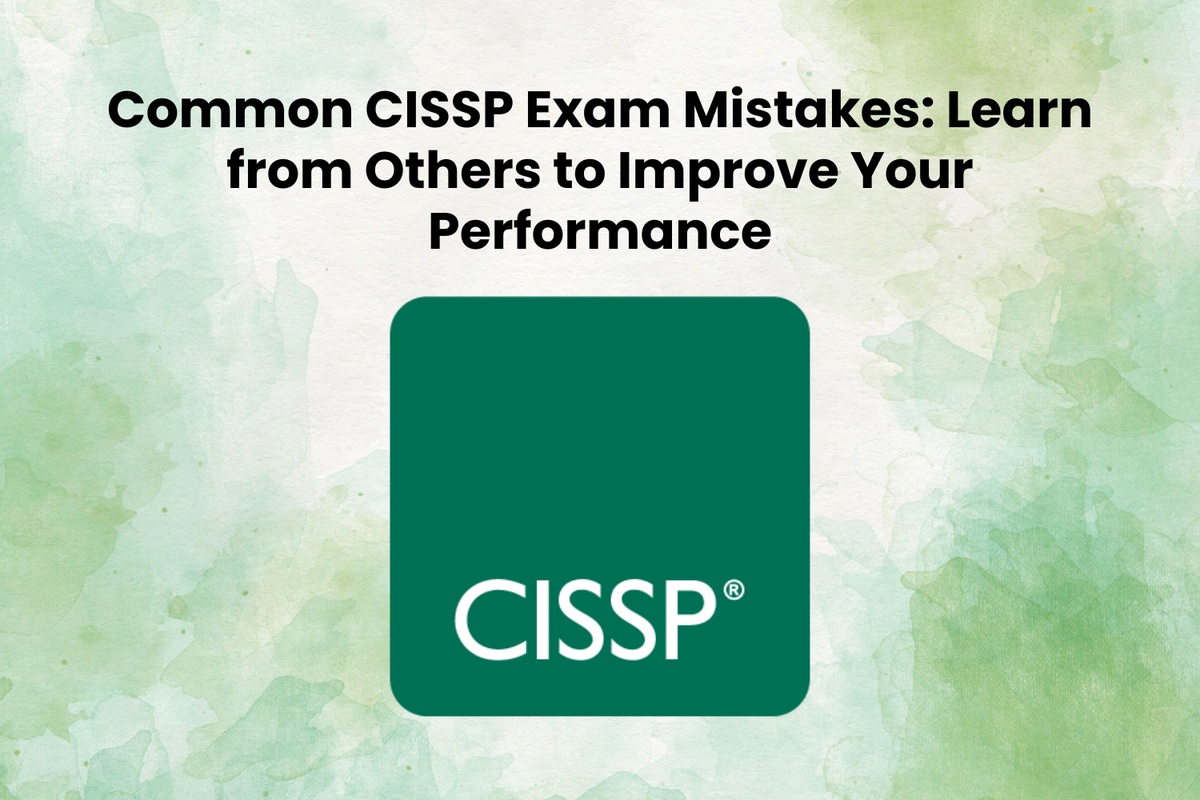The Certified Information Systems Security Professional (CISSP) exam is a crucial step for information security professionals looking to validate their expertise and advance their careers. However, the road to CISSP success is laden with challenges, and candidates often find themselves making common mistakes that can jeopardize their performance. In this blog, we'll delve into some of these pitfalls and offer insights on how to navigate them, helping you enhance your chances of acing the CISSP Exam.
1. Lack of Adequate Preparation
One of the most prevalent mistakes candidates make is underestimating the complexity of the CISSP exam. The breadth and depth of the domains covered require a thorough understanding of various security concepts. Many aspirants commit the error of relying solely on their professional experience and neglecting to study the official CISSP exam guide and relevant study materials.
To avoid this mistake, create a structured study plan that covers all eight CISSP domains: Security and Risk Management, Asset Security, Security Architecture and Engineering, Communication and Network Security, Identity and Access Management, Security Assessment and Testing, Security Operations, and Software Development Security. Utilize reputable study resources, such as official CISSP textbooks, practice exams, and online forums, to supplement your knowledge.
2. Procrastination and Time Mismanagement
Time management is crucial during the CISSP exam, which consists of 250 multiple-choice questions to be completed within six hours. Many candidates falter by procrastinating their study sessions, leading to a last-minute cramming approach. This haphazard preparation often results in stress, fatigue, and a decreased ability to recall information during the exam.
To overcome this challenge, create a study schedule well in advance. Break down the material into manageable sections, allocating specific time slots for each domain. Regularly review your progress and adjust your schedule accordingly. Simulate exam conditions during practice tests to enhance your time-management skills and build stamina for the actual test day.
3. Neglecting Practice Exams
Practice exams are invaluable tools for gauging your readiness and identifying areas that need improvement. However, some CISSP candidates make the mistake of not dedicating enough time to practice tests or underestimating their significance. Real exam conditions can be intense, and familiarity with the question format and time constraints is vital.
To avoid this pitfall, incorporate practice exams into your study routine. Aim to take several full-length practice tests to simulate the actual exam experience. Analyze your performance, focusing on areas where you scored lower, and revisit those topics in your study sessions. This iterative process will not only boost your confidence but also enhance your ability to apply knowledge under pressure.
4. Ignoring the Importance of Domains
Each CISSP domain holds a specific weight in the overall exam, and neglecting any one of them can be detrimental to your success. Some candidates make the mistake of focusing excessively on their areas of expertise while neglecting weaker domains. The CISSP exam demands a balanced understanding of all domains, and a lopsided preparation approach can lead to suboptimal results.
To address this issue, allocate your study time proportionally across all eight domains. Identify your strengths and weaknesses through practice exams, and adjust your study plan accordingly. Prioritize your efforts based on the exam's weightage for each domain, ensuring a well-rounded grasp of the material.
5. Overlooking the Importance of Documentation
The CISSP exam not only tests your theoretical knowledge but also evaluates your ability to apply concepts in real-world scenarios. Some candidates make the mistake of focusing solely on memorization and neglecting the importance of documentation and practical application.
To excel in this aspect, strive to understand how security concepts are implemented in various scenarios. Familiarize yourself with industry best practices, standards, and regulations. Real-world examples and case studies can provide valuable insights into the practical application of CISSP principles. Incorporate hands-on experiences and practical exercises into your study routine to reinforce your understanding.
Conclusion
The journey to CISSP success requires diligent preparation, effective time management, and a well-rounded approach to studying all eight domains. Learn from the common mistakes discussed in this blog to refine your study strategy and improve your chances of acing the CISSP exam. Remember, the CISSP certification is not just a testament to your knowledge; it's a testament to your commitment to excellence in the dynamic field of information security. Best of luck on your CISSP journey!


No comments yet